Change…..
Change is the only constant says Diogenes Laertius.Yes, I feel you nodding and smiling. And as professionals in the ELT industry, we’re very well-aware of the changes that are taking place in our teaching world. Changes that I feel are happening at such whirlwind speed, I sometimes see the need to race against time to be on par!
(image courtesy of http://livesmart360news.com)
I love using the phrase “our teaching world”. Why is that so, you may ask? Well, it makes me have sense of belonging, of sharing, and of connecting with like-minded individuals. Isn’t the teaching world all about connecting and sharing these days?
And these days…
Twitter, facebook, LinkedIn, teaching blogs, communities of practice and the list just goes on.It’s more of we as the individual helping the group and the group, in return, helps us as the individual. We grow together for the betterment of our teaching community.
And then there are those changes in methodologies and strategies concerning the nuances of teaching itself.
Mushrooming in abundance are theoretical terms such as ‘Dogme‘, ‘Task-based Language Teaching‘ and ‘Content-based Teaching‘ which have taken centerstage these days; and where practice is concerned, ELT educators around the world are striving to bring chockful of creativity, fun and dynamism into their classrooms as they become increasingly concious on the need to do so. You can count me into that group as well!
You see, I used to teach at a school with learners of diverse nationalities. It was a truly enriching experience. But a challenge of it’s own. Differing nationalities would mean different cultural and socioeconomic background, learner needs and beliefs about life itself. It was rare to have a task that satisfied the entire class in one go. On a positive note, though, if a task was crafted with much thought and planning, learning could take place exponentially! And a rocking approach that often worked for me was to design tasks based on the competitive team-based learning (CTBL) method.
It’s amusing how academicians take a pendulum approach when it comes to using the competitive approach in class. Some vouch by it, others consider it to be a complete no-no. And me? Neither, really. It’s one of the many approaches. But hey, who doesn’t love games, healthy competition and most of all, rewards?
The works of it…
This outdoor lesson was fueled by my very own passion for treasure hunts and races that I used to participate back home. So, what’s so intriguing about these hunts, you may ask. Well, I found them to be so much fun, engaging and mind-simulating, all in one! Most importantly, these hunts helped tremendously in developing my soft skills, among them being :
a) the ability to harmoniously collaborate with team members
b) critical thinking skills
c) the ability to think out of the box, on my feet and under intense pressure
d) interpersonal communication
e) self-efficacy and self-confidence
f) creative problem-solving skills
As a teacher, I’ve always made an effort to design ELT lessons with underlying aims of developing my learners soft skills, which I believe is of utmost importance especially when my learners are eventually going into the “the big world out there” upon completing their tertiary education.
So, with the help of a wonderful group of co-teachers whom I’ve worked with, I tried and tested this activity twice, both times being very successful and learners immensely enjoying themselves. So here goes :
—————————————————————————————————————————————————————————————————————————————————————————————
Lesson Plan : Amazing Race
Proficiency Level : Pre-Intermediate and Above
Activity Type : Collaborative Task
Learner Age : Teenagers, Young Adults and Adults
Skills Focused : 4 language skills (reading, writing, listening, speaking)
Soft skills (as mentioned above)
Time : 2 – 4 hours (depending on how you set the task)
Number of Learners : 3 – 4 learners per team
Materials : a) Cluemaster’s Briefing sheet b) Participant’s Briefing sheet
c) 5 location clues d) 5 treasure clues
e) Task Completion Sheets f) 5 ELT tasks
~~~~~~~~~~~~~~~~~~~~~~~~~~~~~~~~~~~~~~~~~~~~~~~~~~~~~~~~~~
INITIAL PREPARATION:
1. Selecting Locations
Select 5 famous locations around OR within your university / school that are well spread out and possibly, in circuit-like route. However, you can make it more challenging by choosing locations that aren’t in a circuit route. I used the following circuit-shaped route to be able to easily monitor the game:
2. Selecting ClueMasters
ClueMasters are teachers who’ve volunteered to be stationed at each location. One ClueMaster per location would suffice. However, for a larger group of teams, it’s best to have 2 ClueMasters stationed at each location. To make the race more interesting, ClueMasters should not stand out in the crowd; they should blend in with everyone else in that particular location. The role of the ClueMaster is to:
– assign a language task to the teams arriving at that location
– monitor the teams as they perform the tasks
– verify the completion of the tasks by signing on the Task Completion Sheet of each team.
– handing the next Location Clue and Treasure Clue to the teams.
3. Designing Location Clues
Each location clue is designed to lead teams to their next location. Hence:
Location Clue 1 –> leads to Location Clue 2
Location Clue 2 –> leads to Location Clue 3
Location Clue 3 –> leads to Location Clue 4
Location Clue 4 –> leads to Location Clue 5
Location Clues can be designed as a 2 or 4-line riddle. An example of a Location Clue that I designed was:
“The morning awakes you, bright and shiny,
But there you stand, tired and sleepy,
And then you think of a drink at the place that flies,
A place where you go for cakes and pies.”
(well, you know the answer don’t you ? :))
4. Designing Treasure Clues
There are two kinds Treasure Clues to be designed : –>
Treasure Photo Clue and Treasure Item Clue.
a) Treasure Photo Clue – Riddles designed where the answer would be photos taken at a specific location. An example of a Treasure Photo Clue would be:
“Oh dear, Oh dear, the sky is dark,
The clouds are dark with lightning sparks;
And here you stand, with no clothes to wear,
But who can help you clean them up?”
(and the answer is………..the photo below 🙂 )
(courtesy of limkokwing.net)
b) Treasure Item Clue – Riddles designed where the answer would be items that teams need to buy. These riddles are similar to the ones I’ve written above.
5. Designing Task Completion Sheets
Task Completion Sheets are signed off by the ClueMaster at each location upon the completion of the team’s ELT tasks. Task Completion Sheets would look like this.
6. Designing ELT Tasks
These were designed by the teachers that I worked with and is completely within their discretion. Tasks could range from storyboard writing, memorizing tongue twisters, making a short movie, presenting a speaking topic, solving a language puzzle, or in fact, tasks that are intended to revise what’s been taught in the entire semester. Get creative with what you’d like them to do, rather than copying worksheets from books. 🙂
7. Preparing Debriefing Sheets
Write up a short, clear outline to brief both the participants and the ClueMasters on what they need to do during the race. The participant briefing sample outline can be found here and the ClueMaster briefing sample outline can be found here.
~~~~~~~~~~~~~~~~~~~~~~~~~~~~~~~~~~~~~~~~~~~~~~~~~~~~~~~~~~~~~~~~~~~~~~~~~~~~~~~~~~~~~~~~~~~~~~~~~~~~~~~~~~~~~~~~~~~~~~~~~~~~~~~~~~~~~~~~~~~~~~~~~~~~~~~~~~~~~~~~~~~~~~~~~~~~~~
THE GAME PLAN:
Pre-Race (A day before):
1. Assign 3 – 4 participants to each team. I find 3 to be an ideal number.
2. Get teams to select a team name, and a team leader.
3. Brief teams about the race that’s going to be held. Encourage them to ask questions if they don’t understand what you’re saying.
4. Assign the ClueMasters to their locations. Brief the ClueMasters on their roles during the race.
On The Day of the Race:
1. Send the ClueMasters to their locations.
2. Gather all participants at the starting point, and give them their 1st Location Clues, and Task Completion Sheets.
Very Important Note : If possible, do not send all teams to the same location at one go. Each team should go to different locations the first time; a maximum of two team at each location. Assign Location Clues carefully and accordingly at the start of the race. The teams would then follow their race route automatically. I hope the photo below explains what I’m trying to say:
3. Remind teams on things that they need to have with them (back packs, pens, etc as mentioned during the briefing).
4. It’s now time –> READY, GET SET GO!!
~~~~~~~~~~~~~~~~~~~~~~~~~~~~~~~~~~~~~~~~~~~~~~~~~~~~~~~~~~~~~~~~~~~~~~~~~~~~~~~~~~~~~~~~~~~~~~~~~~~~~~~~~~~~~~~~~~~~~~~~~~~~~~~~~~~~~~~~~~~~~~~~~~~~~~~~~~~~~~~~~~~~~~~~~~~~~
And Lastly…
I was amazed at the amount of fun that they had during the race! It was definitely a tough one to design and plan, but well worth every bit of our time and effort. The race was so much fun and the learners loved every moment of it.
And me? I went back home with a dreamy smile on my face ~~ a time to remember!
Oh, and of course, if you’ve got any questions at all and are interested in getting this done at your school / university, please do get it touch with me here : ratnavathy@gmail.com
**and I’m signing off here with some pictures of the amazing race at my school**

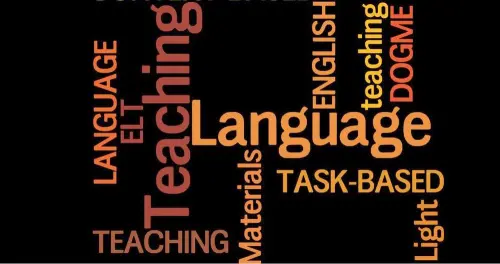
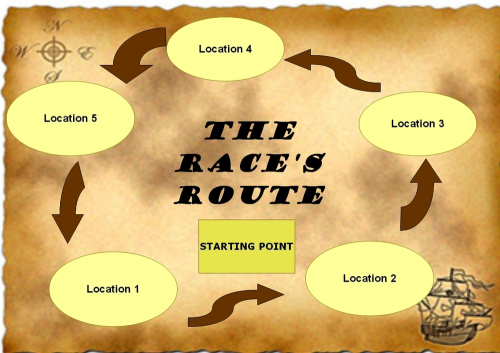

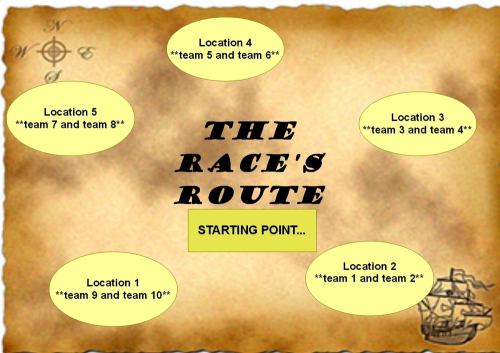
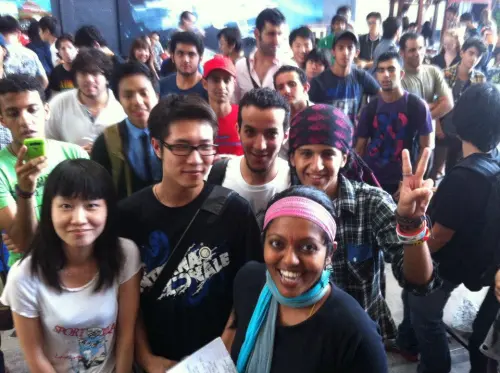
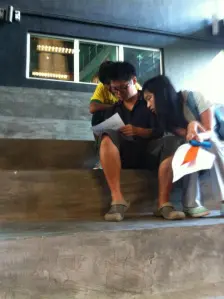

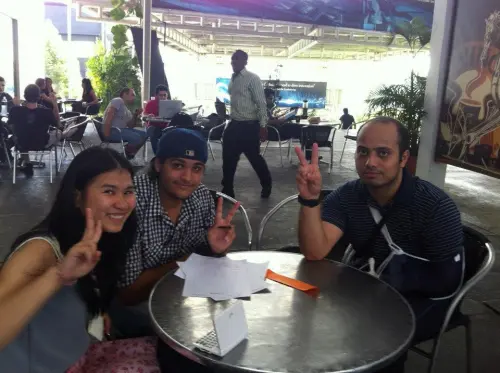
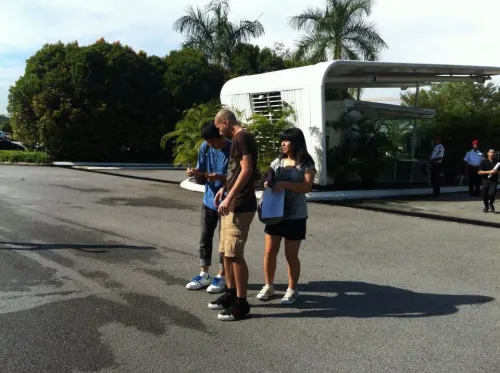
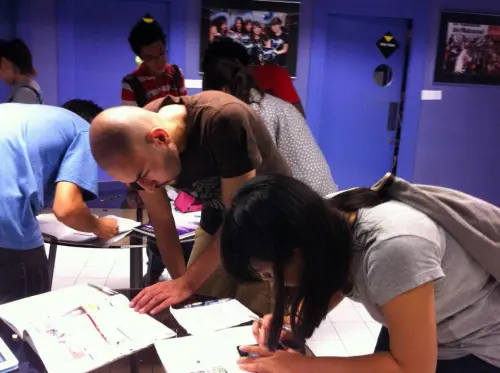
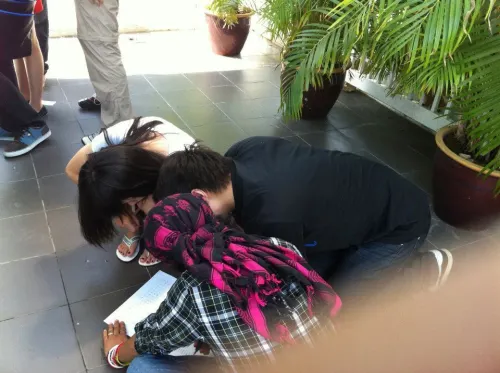
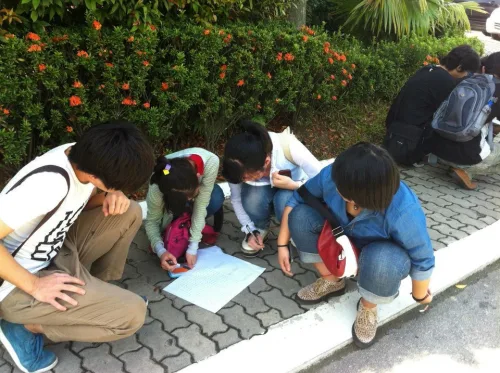
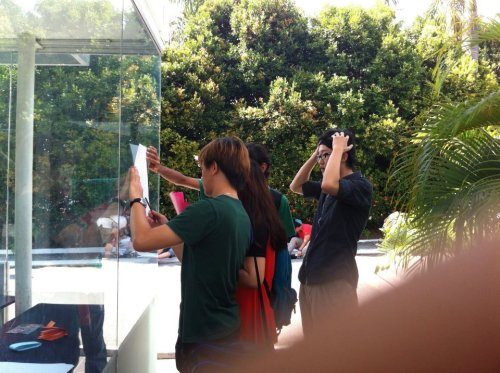
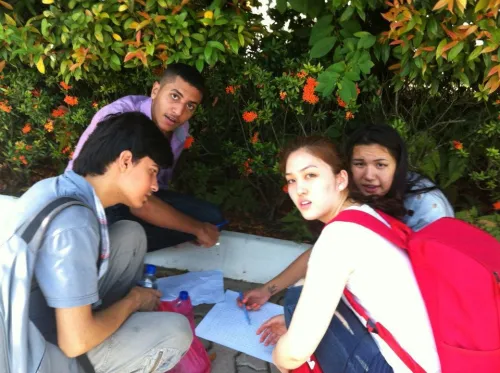
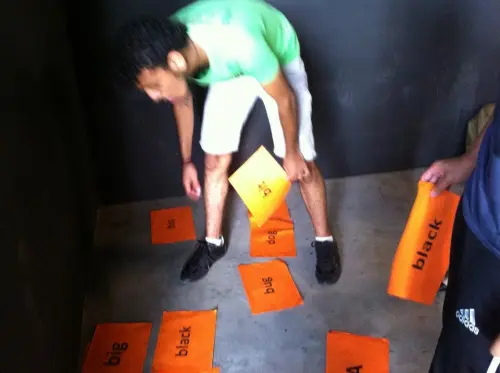
Hi Nismah,
Of course I remember you!:) Who wouldn’t? Your presentation on rhyming for young learners was really fun and engaging, I loved every moment of it!
I’m so sorry to reply so late-I’ve been really busy travelling these past few months. Well, in my case, I started at the same location and ended at the
same location, but I think in your case, you could always get someone to time each team when they start at different locations. They key is to
end at the same place.Hope that helps!
All the best!
Ratna
Dear Leyvi,
Thanks so much for leaving your comments here, I truly appreciate it! I’m so glad to hear that you learners enjoyed the game, it really was worthwhile, wasn’t it?
Kudos on you, you’ve done a wonderful, wonderful job!:)))
All the best,
Ratna
Hi Ratna,
Your blog has helped me a lot in planning and executing our own Amazing Race on campus. The students enjoyed the activity tremendously and have come to value the meaning of teamwork. It surely took many days to finalize the plan but the excitement that I saw on their faces and the creative strategies they came up with to complete the tasks together made everything worth it.
Thank you so much for sharing your lesson plan.
All the best!
Leyvi
Hi Ratna.
If you still remember, I was the one who sat next to you on our way back to hotel last time at Kuching.. 🙂
I would like to know on how we can choose a winner if all teams start/ end at different location?
Dear Dani,
Thank you so very much for leaving your comments on my blog – that’s brilliant that you were able to use my idea in such a successful way! You have no idea how happy that makes me feel – all the way in Bulgaria too!! wow!!
Yes, please do send me the files – I’d love to see the photos especially, of kids having fun. That would be lovely! My email is ratnavathy@gmail.com
Take care Dani, and looking forward to hearing from you soon 🙂
Dear Ratna,
Hello from Bulgaria. I’m Dani, an EFL teacher from Plovdiv. I’d like to say great thank you, for sharing this lesson plan. Without your ideas and help here, our own Amazing Race 2014 would have never happened. It was yesterday and I’m in a hurry to thank you and share the experience:) I work in a private school for English only and together with my colleagues we organized this as a kind of celebration for the end of the school year. We did it in the History Museum of our city, having the rooms there for locations. So it actually combined English with knowledge of history 🙂 We chose the museum because our children are 9-15 years old. We had 11 teams of 3-4 people, so your idea works for about 35-40 children as well!!! We all had some great time! I modified it a little bit so in the end it was actually a treasure hunt with some real coins being the treasure 🙂 Of course, I had one or two organizational difficulties, but for the next one these details will be cleared.
So once again I’d like to say how grateful to you I am – without your ideas and plan our end-of-year celebration wouldn’t have been so much fun! :)))
I’m ready to sent you all the files if you’re interested (there are some things in Bulgarian though, you should know that).
Thanks for sharing again! 🙂
All the best,
Dani
Pingback: Vacation camps: Teaching without a course book (the presentation I wish I gave) | livinglearning
Dear Ika,
Lovely to have you as the first person to comment on my new blog:). And I’m glad that you found this idea interesting. I’ve tried and tested this idea about 3 times, and each time I try it, I’ve tweaked, refined, and made it better and more interesting.
15 kids is quite a number, if you can handle them alone it would be great. But if you can get the help of a few teacher it would be even better. It might get chaotic with just you being in control.
However, if you DO manage to conduct it alone, please do tell me how you did it, I”d love to learn from you as well.
Take care Ika, and thanks so much again!:)
Warm Regards,
Ratna
Wow…Ratnavanthy, Thanks a lot for sharing this amazing race. Actually, adults are sometimes like playing outdoor games just like youth or kids. I play some outdoor games for my adult class,too. I think the games above is very exciting ans the students look happy and fun:) I will try this games in my class. I have maximum 15 students in my class,so it’s easy for me to handle them. This games teaches us about cooperation among friend, understanding each other and how to be a good teamwork.
Thanks a million, Ratna^^. cheers
Wish you always the best
Ika Chieka W
Dear Anne,Thanks so much for taking the time to read and leave a comment here, Anne:)I must’ve left that part out in this post, but all the locations are actually ON-CAMPUS!!!:).A you’ve mentioned, it’d have been tough on my side as well, to get permission from the university officials to allow students to get this activity done out of campus. The locations I chose were different pit-stops within campus that I think, learners would easily identify. You’re absolutely right when you mentioned that it’s easily adaptable to multiple levels and age groups. I deliberately graded the language for the treasure clues and location clues as to not kill the spirit of participating :).I’d love to hear how it went with your young learners group..:)….All the best, dear!Ratna
This looks like a fun and exciting lesson for students. In a teaching situation like mine, the preparation would be worth the outcome. I guess in a place like Korea, it would be very difficult to get permission for non-adult students to go off-campus for an activity like this, but I would love to try a smaller on-campus version for my younger learners and a modified off-campus version for my university students. I like that there are three types of activities: figuring out location clues, figuring out treasure clues and ELT tasks of any sort. I also like the materials you have provided – clear, simple, easy to use and easy to modify.Your activity is very adaptable to multiple ages and levels. Thank you so much for sharing!